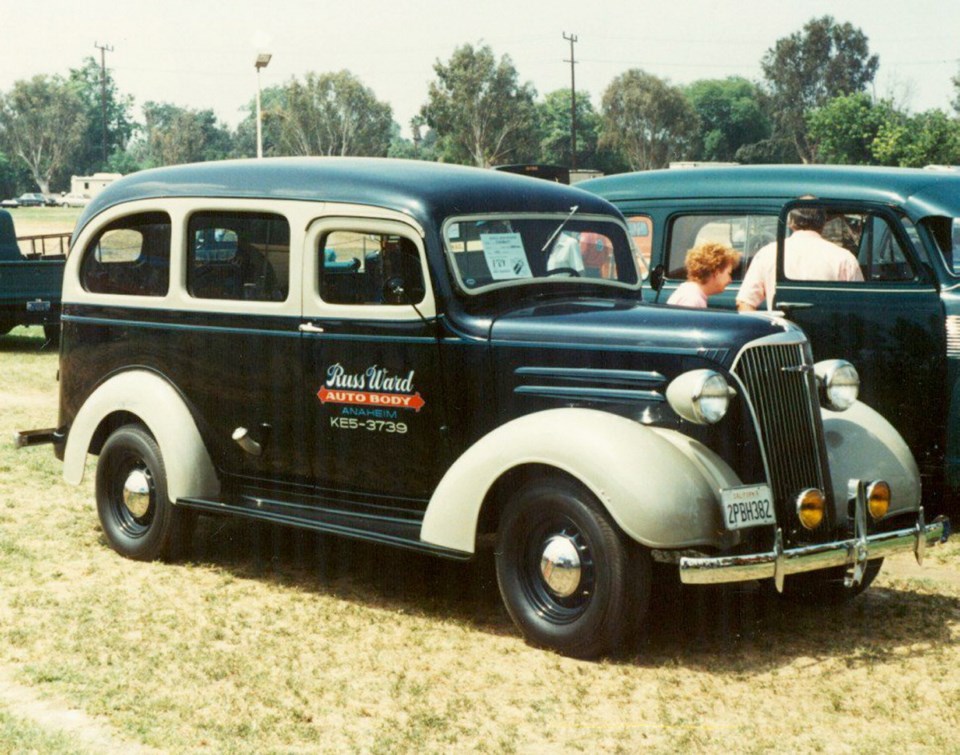In an ever-evolving automotive world, model names come and go. Some, such as the Model T Ford, Volkswagen Beetle and Chevrolet Impala, had long staying power. And others, such as the Chevrolet Corvair Corsa and Cadillac Catera, stay around for only a few years.
The Model T Ford is long gone, of course, and original Beetle production ended in Puebla, Mexico, in July 2003. But its name and image were so strong that Volkswagen reincarnated a New Beetle in 1999, this time with a front engine and front-wheel drive, not rear-engine, rear-drive. It was produced until this year.
Another model that has stayed the course and remained true to its original calling is the truck-based all-steel Chevrolet Suburban (called Suburban Carryall until 1973) station wagon. This big eight/nine-passenger General Motors workhorse arrived in 1935 and is still being produced.
Not only has the Chevrolet Suburban (there is also a GMC Yukon version) been around for about 85 years, it had virtually no competition until the arrival of the 1953 International Travelall, and more recently the 1997 Ford Expedition.
The original Suburban Carryall all-steel station wagon arrived in mid-1935, and although the current Suburban is loaded with luxury and convenience, the original was pretty basic. This is not surprising given that it was little more than the Chevrolet panel truck with windows and utilitarian removable seats for up to eight passengers.
Being truck-based, no extra provision was made for passengers who had to climb awkwardly through the right front door to reach the middle and rear seats. Access to the cargo space was through the standard, vertically hinged truck doors at the rear. These could be replaced by an optional station-wagon-like tailgate.
While not a sales sensation in its first few years, it was sufficiently popular that General Motors resumed building it after the Second World War’s interruption in automobile production. Like the cars, the first postwar trucks, including the Suburban, were virtually copies of prewar models.
Because military truck production had continued during the war, companies such as GM and Ford could get them back into production more easily than cars, and development of new truck models started sooner than cars. Thus, GM introduced its more modern Chevrolet and GMC trucks for 1947, while its full line of new postwar cars didn’t arrive until 1949.
The revised Suburban, like the rest of the truck line, benefited from such improvements as a wider, roomier cab and a 25 per cent increase in glass area.
This was the era when trucks were becoming more attractive as manufacturers realized work-a-day haulers didn’t need to look like all work and no play. This trend to handsome trucks really emerged in 1955, when Chevrolet’s Cameo Carrier pickup came with a sculpted, cab-width box, car-like taillights, two-tone paint and a deluxe cab.
The Suburban also got some glamour when the new ’55s were introduced as mid-year models. Regular Chevy and GMC trucks benefited from the dramatic new Chevrolet car’s styling with such features as wraparound windshields, “eyebrow” headlamps and, on the Chevy, an eggcrate grille.
The Suburban enjoyed these improvements too, and along with the standard overhead-valve six, Chevrolet’s sensational new overhead-valve V-8 was available. The electrical system was upgraded to 12 volts.
As trucks became less utilitarian, they began to offer more convenience and luxury items such as power steering, power brakes and automatic transmissions. These made commercial vehicles easier to drive and turned them into more car-like conveyances, paving the way for the increasing use of trucks as passenger vehicles.
The Suburban soldiered on through the years unchallenged as the only large, truck-based station wagon in the business — the International Travelall faded from the scene in 1975.
The Travelall did have one advantage over the Suburban for several years: a second passenger side door. General Motors finally got around to adding a very welcome second right-side door to the Suburban in 1967 and made it a full four-door in 1973. Today, we can’t imagine it any other way.
The big Suburban really liked gasoline, so for a while it offered optional diesel power for increased fuel economy. Four-wheel drive was also made available.
GM had a good idea back in 1935, so good that it has lasted to the present time. Everything is big in Texas, and it’s no surprise that these Suburban “Texas Taxis” have found particular favour there.
Minivans, sport utility and crossover vehicles largely displaced station wagons, at least in name, as the family hauler of choice, although wagons are regaining some popularity.
But for carrying a big load of passengers and cargo, after all these years, the Suburban is still the quintessential hauler. And if the Chevrolet name isn’t quite prestigious enough, you can get virtually the same vehicle with more luxurious appointments by buying a Cadillac Escalade.



